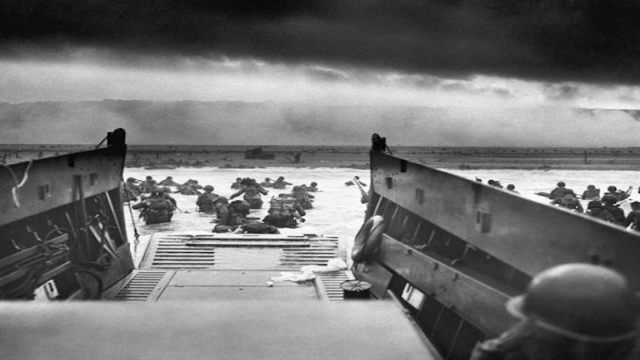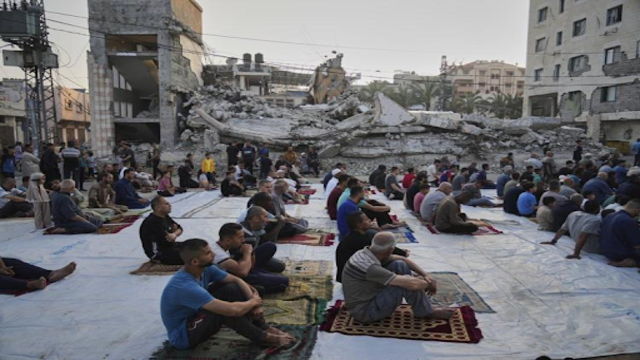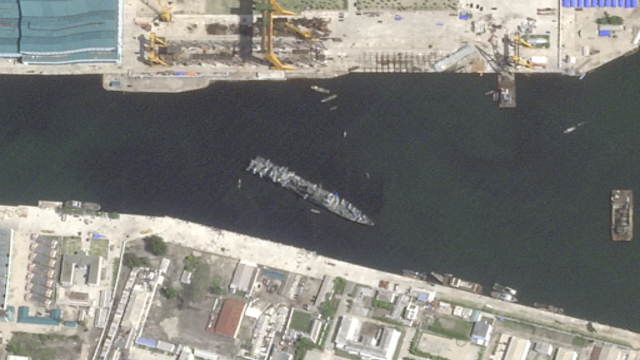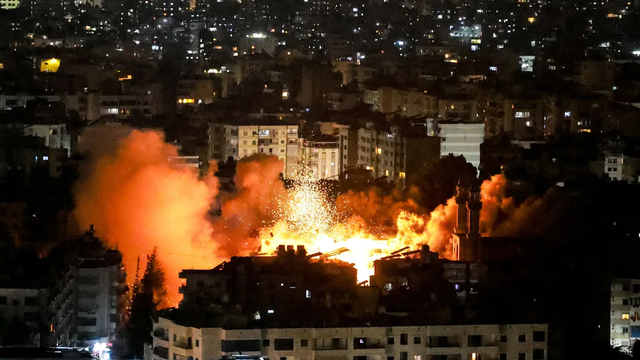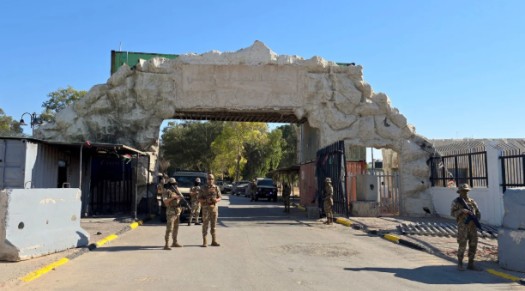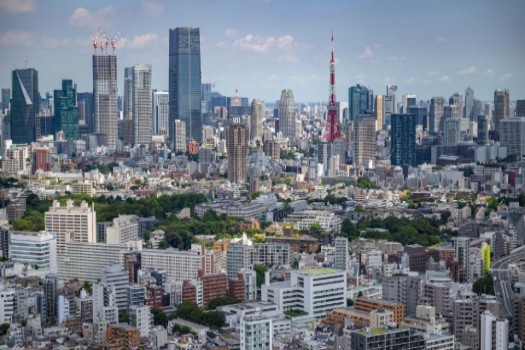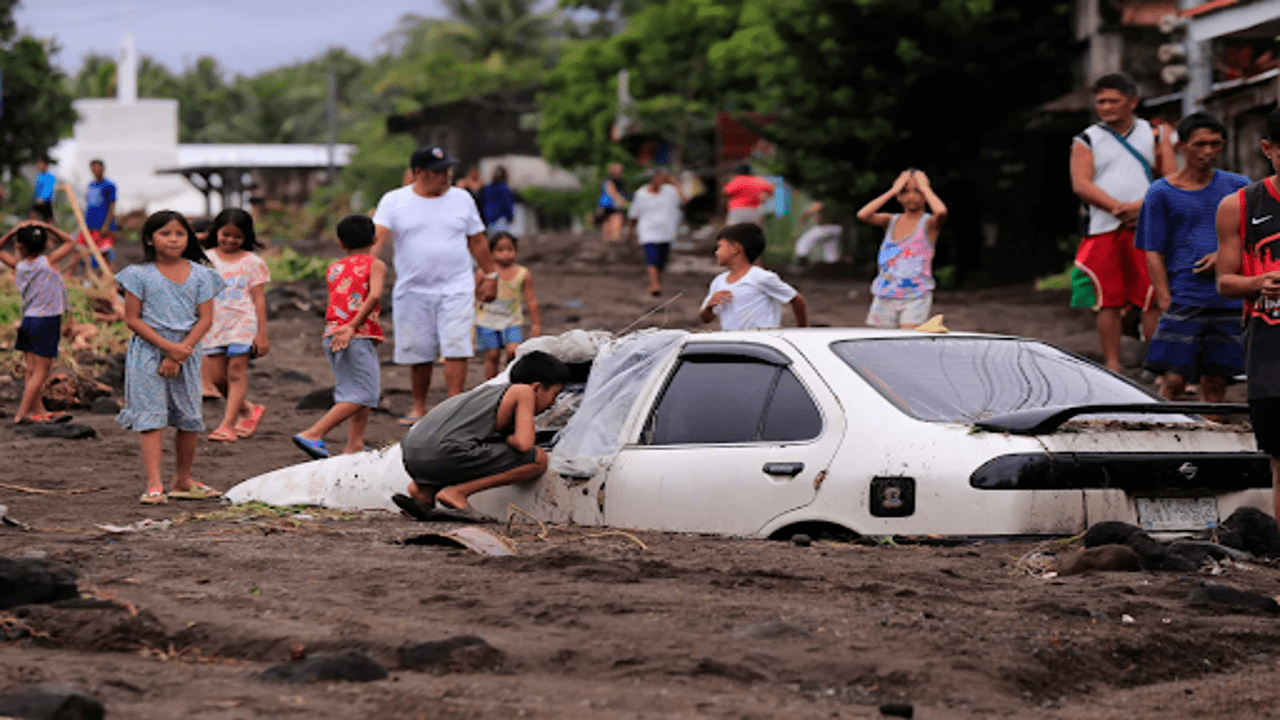
Villagers in Guinobatan, Albay province, south of Manila, were seen inspecting a car that had been buried under volcanic ash. The ash was washed into the village by heavy rains caused by Tropical Storm Trami on October 23, 2024. The storm's intense rainfall triggered mudflows, leaving the vehicle submerged in ash. Getty images
Tropical Storm Trami caused widespread destruction in the northeastern Philippines on Thursday, leading to devastating floods and landslides. The storm claimed the lives of at least 24 people, many of whom drowned in the heavily affected Bicol region and nearby Quezon province. As the storm lashed the country, authorities raced to rescue people, some of whom were stranded on rooftops, while vehicles were swept away by floodwaters.
In response to the disaster, the government shut down schools and offices across Luzon, the country's largest island, for a second consecutive day, prioritizing disaster response efforts. Trami, locally called Kristine, struck the northeastern province of Isabela after midnight and made its way through the mountainous Ifugao province by dawn. With sustained winds of 95 kph (59 mph) and gusts reaching 160 kph (99 mph), it was moving westward toward the South China Sea.
An aerial shot captures a coast guard rescue boat helping to evacuate residents to safer areas in Polangui town, located in Albay province south of Manila, Philippines, on October 23, 2024. Getty Images
The death toll is expected to rise as rescue operations continue, and isolated towns and villages start sending out reports of the damage. Many areas have been cut off due to flooding, landslides, and fallen trees. Brig. Gen. Andre Dizon, regional police chief, stated that Naga City, in the Bicol region, was one of the hardest-hit areas. Flash floods inundated the city, with more than two months’ worth of rainfall pouring down in just 24 hours, coinciding with high tide.
On October 23, 2024, a volunteer rescuer helped an elderly woman as residents were moved to safer areas in Bato town, Camarines Sur province, located south of Manila, Philippines. The evacuation was part of efforts to protect people from the severe flooding. Getty Images
Despite the grim situation, thousands of villagers were rescued by government forces, but many more remained trapped, especially in the Bicol region. Around 1,500 police officers have been deployed to assist in disaster mitigation work. Dizon noted that while they were doing their best, there needed to be more motorboats, making it difficult to rescue everyone immediately. He added, "We’re looking for ways to deliver food and water to those who were trapped but could not be evacuated right away."
In addition to the flash floods, mudflows from the active Mayon Volcano in nearby Albay province buried several vehicles. The storm's impact was severe enough to submerge cars in floodwaters and halt transportation in certain regions. Unfortunately, ongoing stormy conditions have slowed down relief efforts, making it even more challenging to reach those in need.
On October 23, 2024, trucks were left stuck on a flooded highway in Nabua, a town in Camarines Sur province, located south of Manila, Philippines. The severe flooding caused by heavy rains brought traffic to a halt, leaving vehicles stranded. Getty Images
The Philippines’ disaster mitigation agency reported that more than 2 million people were affected by the storm. Among them, around 75,400 villagers were displaced and had to seek refuge in safer areas. Rescue operations are ongoing, but the severe weather continues to hamper relief efforts in many parts of the country.
The Philippines, located along the Pacific Ring of Fire, is no stranger to such natural disasters. The country faces an average of 20 storms and typhoons each year. In 2013, Typhoon Haiyan, one of the strongest tropical cyclones ever recorded, leftover 7,300 people dead or missing, wreaking havoc across the nation.


